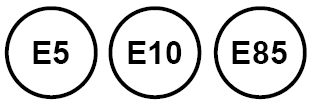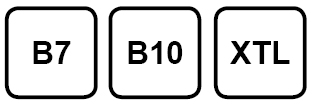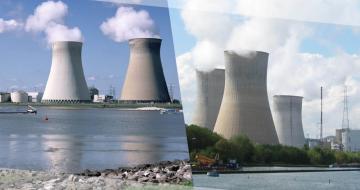Table of Contents
Road vehicles and filling stations

In order to help consumers choose the right fuel for their vehicle, the European Union has adopted new labelling requirements for new vehicles and filling stations. From October 2018, a new single, standardised set of fuel labels will appear across Europe.
These labels will be placed:
- on new vehicles, next to the door/cap of the fuel tank;
- in the vehicle’s instruction manual. For some new vehicles, this information may also appear in the electronic manual available through the in-car infotainment console;
- at all public filling stations on the fuel distribution unit and on top of the fuel dispensing nozzle;
- at motor vehicle dealerships.
European standardisation of fuel labels
The labels will be deployed across the 28 European Union Member States, the EEA countries (Iceland, Lichtenstein and Norway) and in Macedonia, Serbia, Switzerland and Turkey.
What is the EU directive?
Directive 2014/94/EU on the deployment of alternative fuels infrastructure sets out, among other things, new provisions in terms of marking fuels in filling stations and for new vehicles.
From when?
From 12 October 2018, a new single, standardised set of fuel labels will appear across Europe.
The directive's aim?
Standardisation of the labelling/identification of fuels at filling stations and for vehicles throughout all European Union countries.
What vehicles are concerned?
The labels will appear on new road vehicles, namely:
- mopeds, motorcycles, tricycles and quadricycles;
- passenger cars;
- light-duty vehicles;
- heavy-duty vehicles;
- buses and coaches.
European legislation requires that the labels relate only to new vehicles placed on the market or registered after 12 October 2018. Car manufacturers do not recommend installing the labels on older vehicles. Please contact your local dealer if you need advice about the type of fuel recommended for your vehicle.
What is changing compared to the current situation?
|
|
Before |
After |
|---|---|---|
| Petrol |
E95 |
E5 |
|
E98 |
E5 |
|
|
E95 E10 |
E10 |
|
|
Diesel |
10S Diesel |
B7 |
New fuels
B10 Diesel
B10 diesel satisfies the standard NBN EN16734 (different from that for the current B7 diesel). It has a maximum FAME (biocomponent) rate of 10 % instead of 7 % in the current B7 diesel (EN590). Consequently, the usage and guarantee rules in diesel vehicles are different.
B20 and B30 diesels
B20 diesel contains a maximum of 20 % biocomponents (FAME), B30 diesel a maximum of 30 % biocomponents (FAME). These products are designed solely for captive fleets (a well-defined group of vehicles using such fuel in a controlled way).
XTL diesel
XTL diesel is a family name under which synthetic paraffinic diesel fuels are found. They have a lower density and a lower sulphur and aromatics content and type A has a higher cetane number than diesel EN590. XTL diesel meets another standard than EN590 diesel.
What do the labels look like?
There are specific label templates for petrol-type fuels, diesel-type fuels and gaseous-type fuels.
Petrol
The label for a “petrol”-type fuel is in the shape of a circle. The “E” followed by a digit reflects the petrol's biocomponent content.

Diesel
The label for a “diesel”-type fuel is in the shape of a square. The “B” followed by a digit reflects the diesel's biocomponent content. XTL indicates synthetic diesel.

Gaseous fuels
The label for a “gaseous”-type fuel is in the shape of a diamond. These include hydrogen, CNG, LPG and LNG.

The label will be affixed to new vehicles and to petrol, diesel, hydrogen (H2), compressed natural gas (CNG), liquefied natural gas (LNG) and liquefied petroleum gas (LPG) type fuel pumps in all filling stations in the European Union; clearly and visibly displayed for consumers from 12 October 2018.
Since this is a compliance date, vehicle manufacturers and filling station operators will begin to introduce these labels over a transition period prior to this date.

